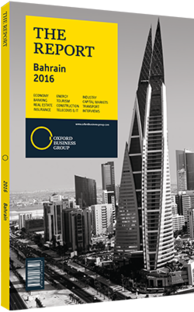Public-private partnerships help address Bahrain's nationwide social housing shortage
Faced with a backlog of more than 50,000 social housing requests, Bahrain’s Ministry of Housing (MoH) has turned to the private sector for help, and in 2016 the first citizens began to receive the keys to brand new properties built under a pioneering public-private partnership (PPP).
Private Partner
The developer Naseej signed a BD208m ($548) contract to build 2800 affordable and social housing units. This includes around 2500 villas provided as social housing, which will be bought directly by the MoH and allocated to citizens who qualify, while 165 villas and 202 apartments have been built as affordable housing units that can be purchased directly by citizens using funding arrangements subsidised by the government.
The new affordable housing stock was released in 2014 in four tiers at 90-day intervals. The first tier was available to Bahrainis on the Eskan Bank housing list, the second was limited to Bahrainis earning less than BD2000 ($5300) a month and the third to Bahrainis earning more than BD2000 ($5300) a month. Expatriates were then allowed to buy property in the final tier, but had to pay an extra BD100 ($260) per sq metre of built-up area. By the time the final tier was released, all the villas had been sold, and the remaining properties were all flats. “The affordable apartments range between 117 and 235 sq metres, so non-Bahrainis would pay an extra BD11,700 ($30,800) or BD23,500 ($61,900), depending on the size of the property,” Mark Haikal, head of investments at Naseej, told OBG.
A Collective Approach
Although it also has other property interests including an 8000-unit social housing project in Morocco, Naseej was created to address the housing issue in Bahrain and its shareholders include the kingdom’s biggest mortgage provider Eskan Bank, as well as Ithmaar Bank, Khaleeji Commercial Bank, Faisal Islamic Bank of Egypt, Ibdar Bank, Palm Capital, Ithmaar Development Company, Gulf Finance House and the Social Insurance Organisation of Bahrain.
As such, the PPP represents an example of Bahrain’s developers, banks and the MoH working together to address the housing shortage.
Diyar Al Muharraq
In March 2015 an even larger design-and-build contract was inked when the developers of the new community of Diyar Al Muharraq agreed to build 3100 residential units to be purchased by the MoH’s Social Housing Programme for BD276m ($727.1m).
Construction was due to start on 1175 sq metres of the Diyar Al Muharraq site in October 2015. In its entirety, the $3.18bn mixed-use real estate project comprises 12 sq km of land, and seven islands with 40 km of waterfront and beaches. The properties are due to be handed over in December 2018. “This major agreement will encourage further cooperation between the public and private sectors to create more housing projects in Bahrain,” said Maher Al Shaer, CEO of Diyar Al Muharraq.
Al Shaer became CEO of Diyar Al Muharraq in 2013, the same year in which he published an academic text on the importance of clearly planned real estate in the economic development of Bahrain. Prior to that he had worked in both real estate and in retail, where he was vice-president and country head of Majid Al Futtaim when the company was designing and constructing Bahrain City Centre, the kingdom’s biggest and busiest shopping mall.
In Diyar Al Muharraq, he has emphasised the importance of building community facilities such as schools, mosques, parks, health centres and transit stops as part of the master plan, while aiming to build homes that are both innovative and dignified. The individual properties are designed to emphasise privacy and additionally to allow for future expansion in keeping with the model that is used in the construction of traditional Bahraini family villas.
You have reached the limit of premium articles you can view for free.
Choose from the options below to purchase print or digital editions of our Reports. You can also purchase a website subscription giving you unlimited access to all of our Reports online for 12 months.
If you have already purchased this Report or have a website subscription, please login to continue.

